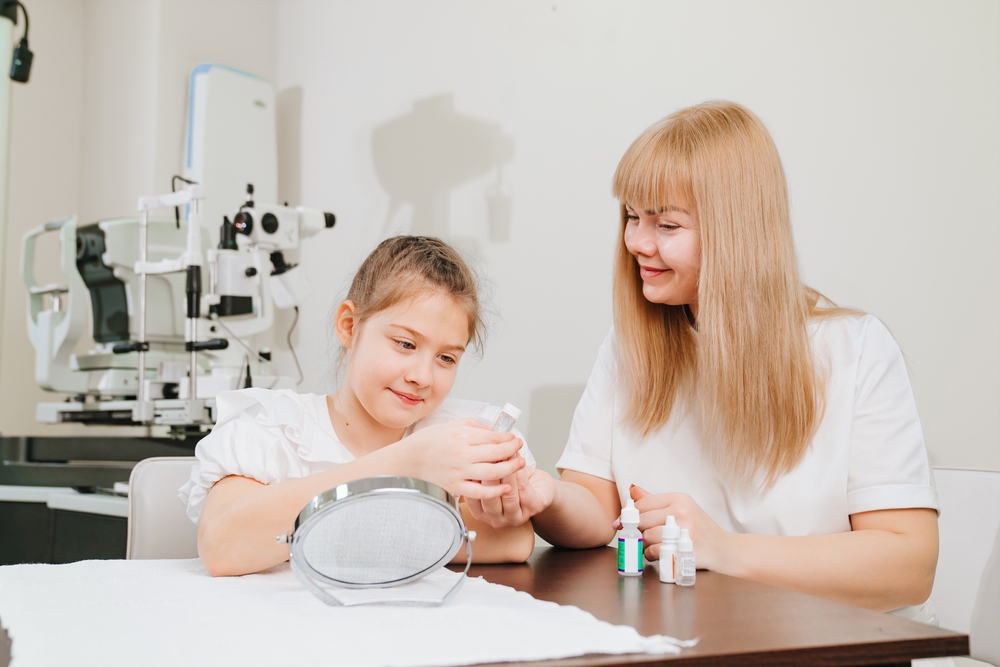
Myopia (commonly known as nearsightedness) is one of the most prevalent vision conditions in children and young adults today. With increasing screen time and lifestyle changes, more families are noticing signs of myopia earlier than ever before. Understanding what causes myopia, how to recognize the symptoms, and what can be done to manage it is key to protecting your child’s vision for the future.
What Is Myopia?
Myopia is a refractive error where close-up objects appear clear, but distant objects are blurry. This happens when the eye grows too long from front to back, or when the cornea is too curved, causing light to focus in front of the retina instead of directly on it. Myopia typically begins in childhood and often progresses throughout the teenage years. Left unmanaged, it can increase the risk of developing more serious eye conditions later in life, such as retinal detachment, glaucoma, or macular degeneration.
Common Causes of Myopia
While genetics play a strong role in the development of myopia, children with nearsighted parents are more likely to develop it themselves. Environmental factors also contribute. Prolonged near work like reading or using digital devices, and limited outdoor activity have both been linked to the onset and progression of myopia.
Recognizing the Symptoms of Myopia in Children
Parents should watch for signs of myopia in their children, especially as they reach school age. Symptoms may include:
Frequent squinting to see distant objects
Complaints of blurry distance vision
Sitting very close to the TV or holding devices close to the face
Excessive eye rubbing or headaches
Poor performance in school due to vision problems
If you notice any of these signs, scheduling an eye exam is the first step to getting your child the support they need.
The Importance of Regular Pediatric Eye Exams
Routine eye exams are essential for early detection and monitoring of myopia. We recommend that children receive comprehensive eye exams annually, even if they aren’t showing any obvious symptoms. Early intervention can slow the progression of myopia and help protect long-term vision health. These exams allow our optometrists to track subtle changes in your child’s eyesight over time, identify risk factors, and implement personalized treatment plans if needed.
What Is Myopia Management and Why Is It Important?
Myopia management goes beyond traditional glasses or contact lenses. It focuses on slowing the progression of nearsightedness to reduce the risk of more serious eye problems in the future. We offer advanced treatment options such as:
Atropine Eye Drops: Low-dose atropine drops used nightly can help slow the elongation of the eye that causes myopia to worsen.
Orthokeratology (Ortho-K): Specially designed overnight contact lenses gently reshape the cornea while your child sleeps, providing clear vision during the day without the need for glasses or contacts.
Soft Multifocal Contact Lenses: These daily or monthly lenses are worn during the day and have been shown to reduce the progression of myopia in children.
Each child’s needs are unique, and our team works closely with families to develop a personalized management plan.
Supporting Families in San Mateo and Surrounding Communities
Myopia is becoming more common, but with the right approach, it doesn’t have to control your child’s future. Our optometrists are committed to educating and guiding families through every step of the process, offering expert care and the latest treatment options in a welcoming, family-friendly environment.
If you are concerned about your child’s nearsightedness, call us today at (650) 343-2080 or email us at info@myeyeworks.com to schedule a consultation.









